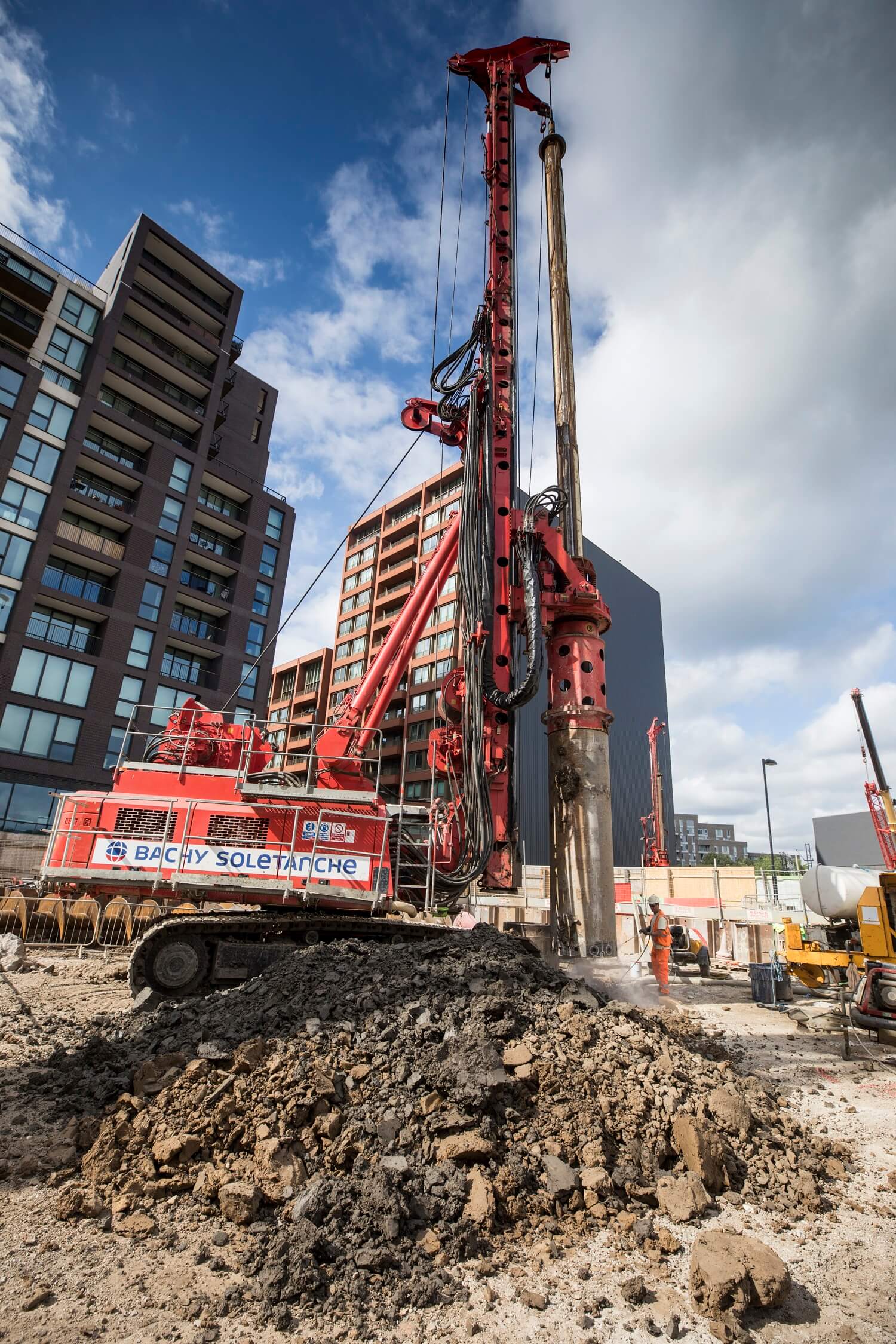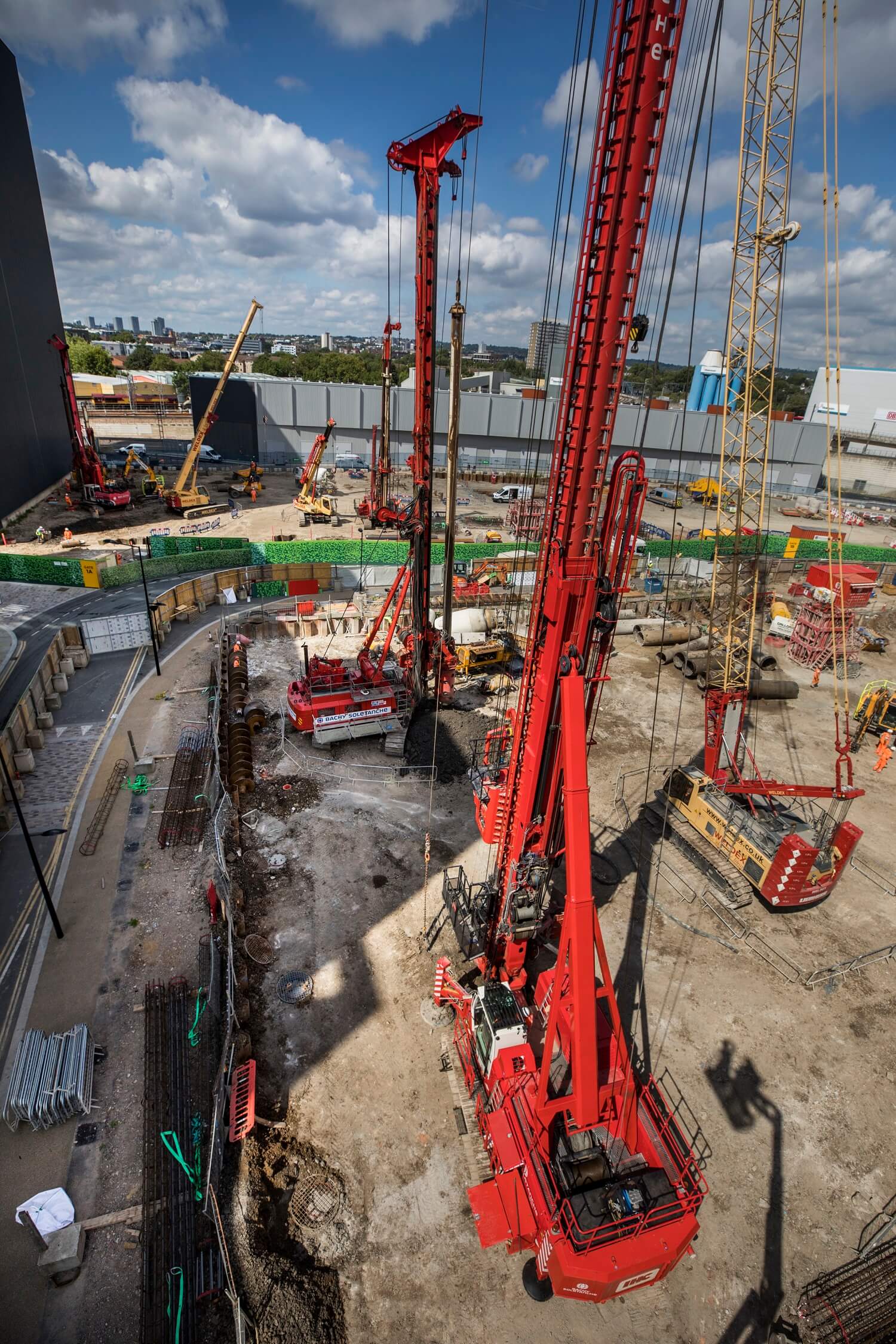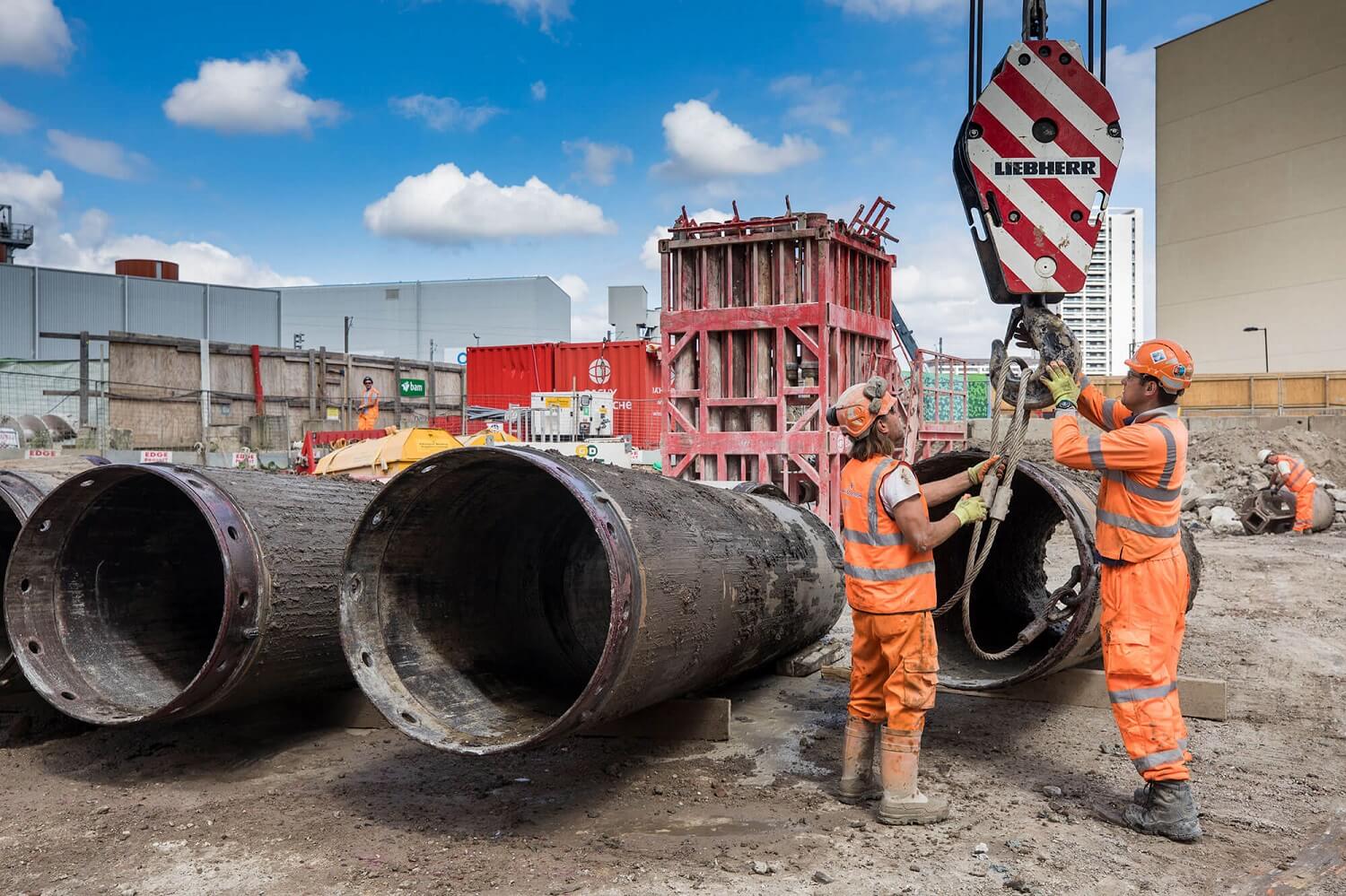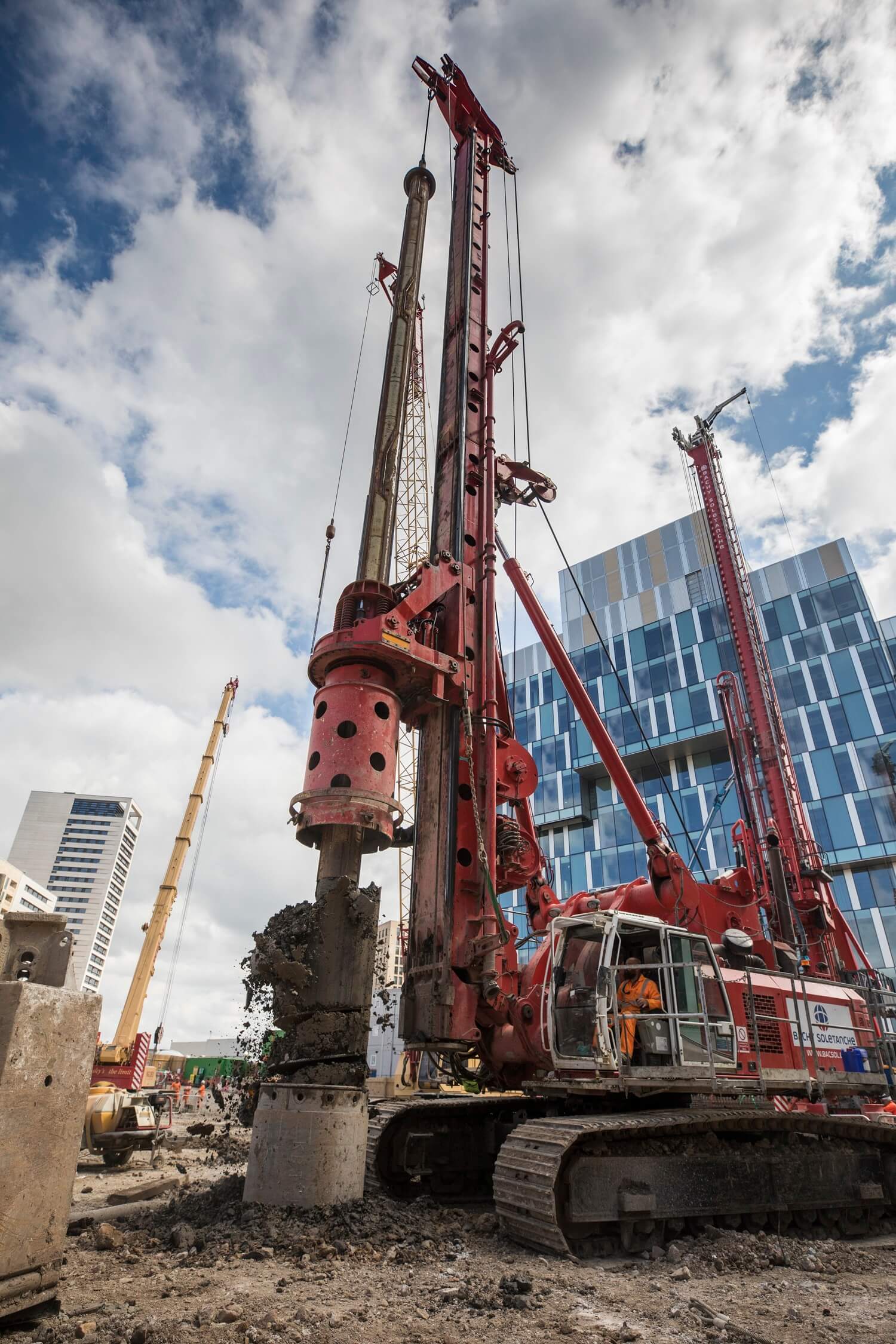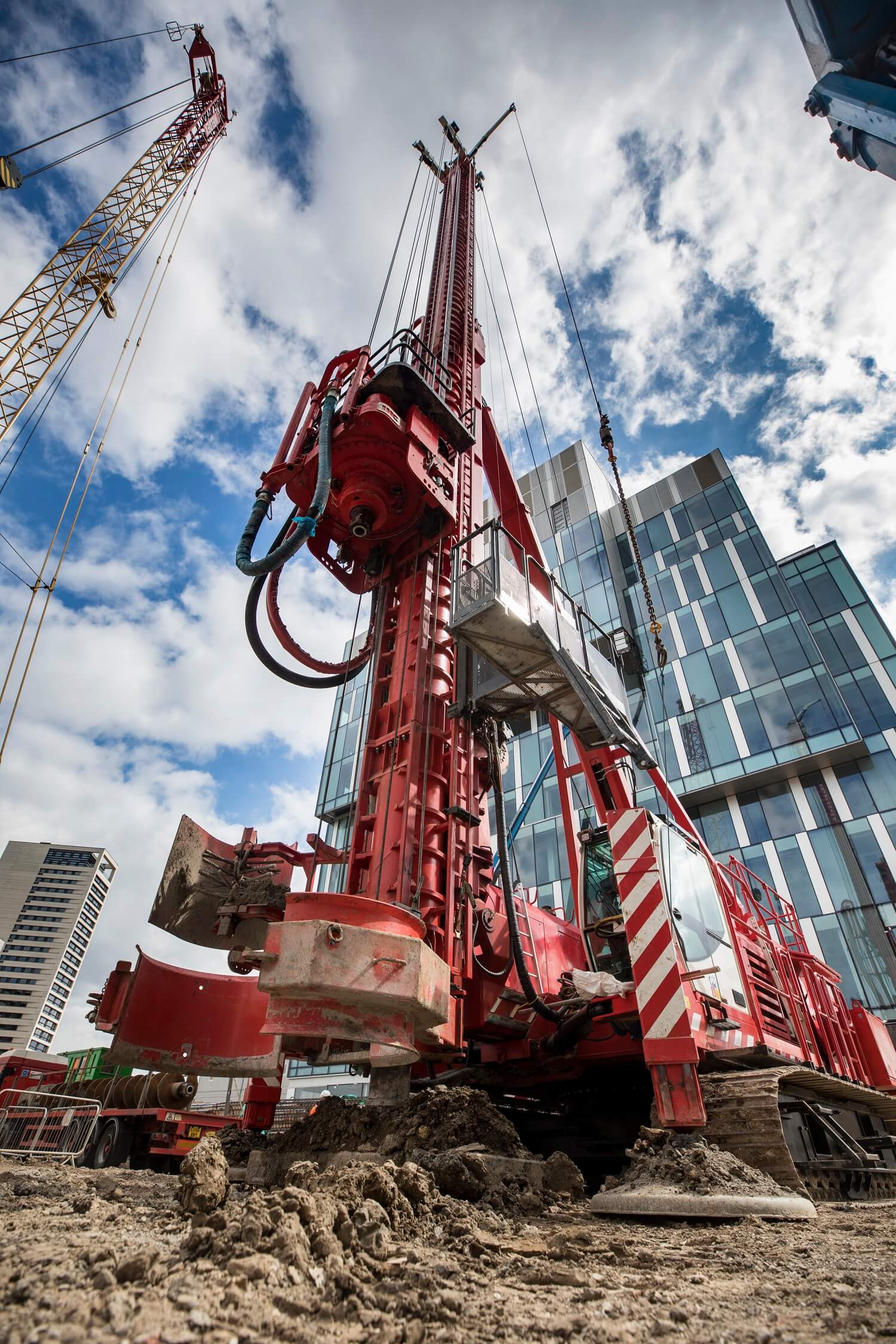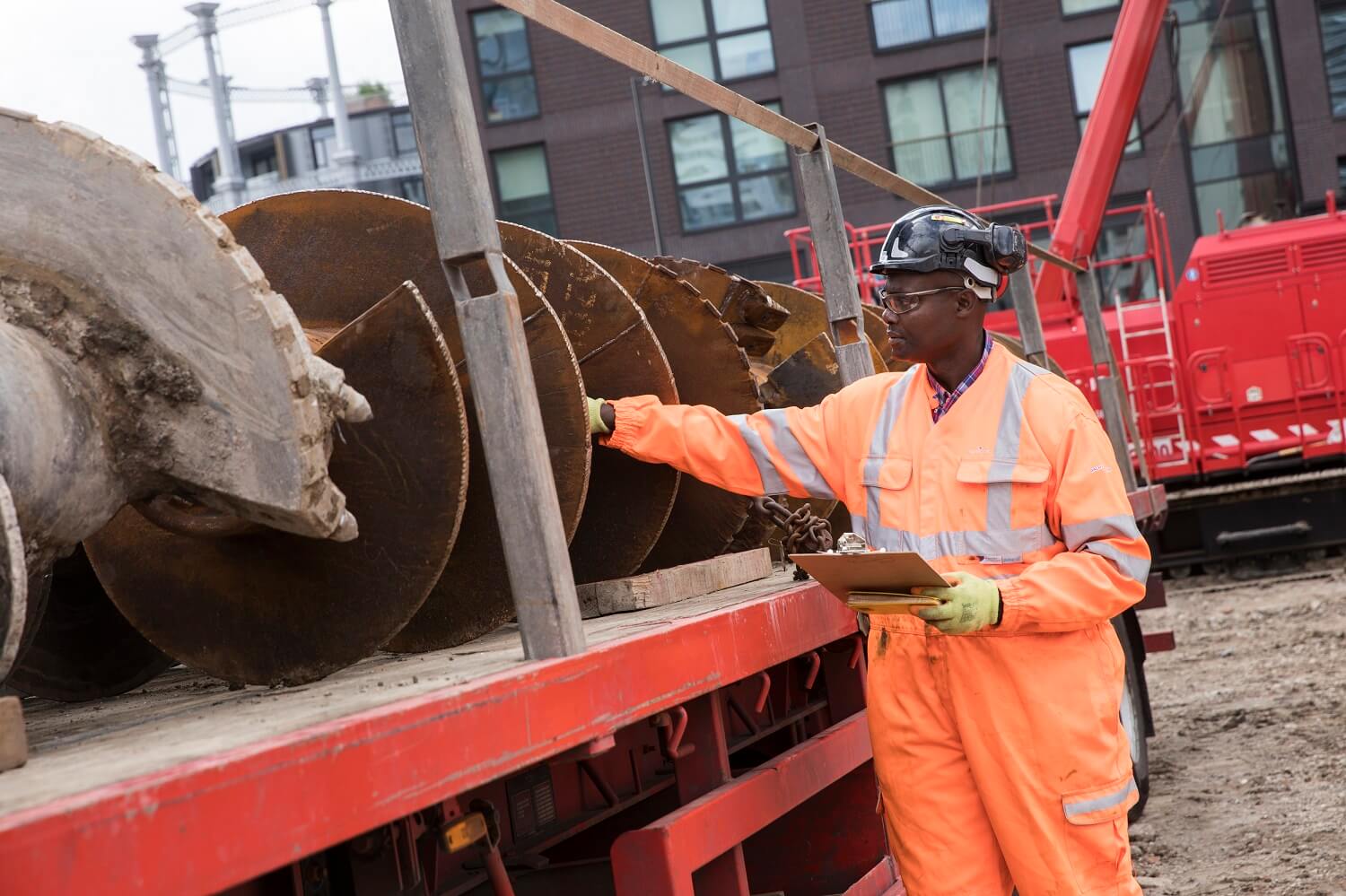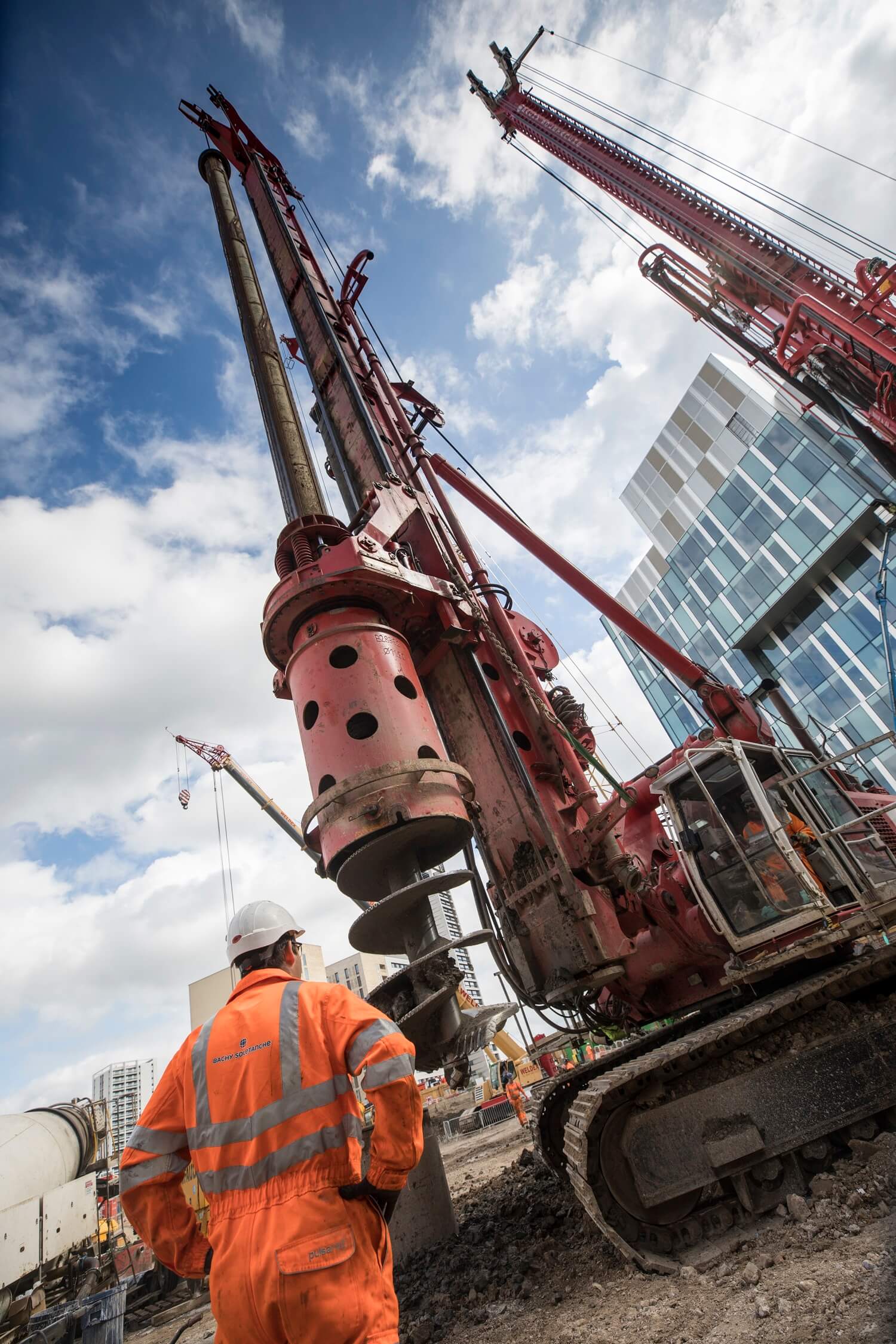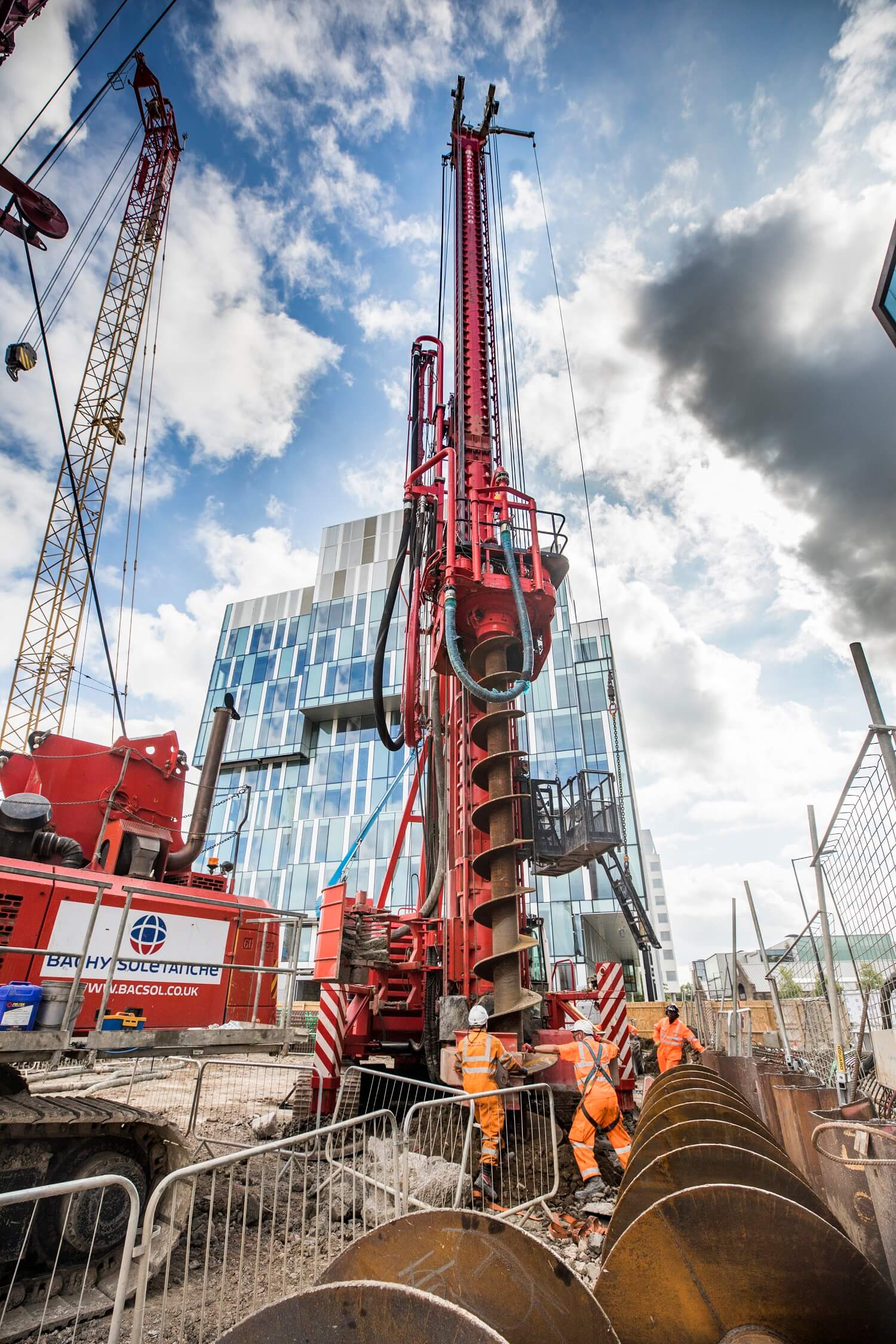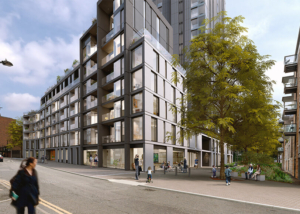THE SCHEME
Kings Cross S1 is a multi-purpose, 12-storey building, offering Grade A office space along with retail and restaurant units. The site is bordered by Handyside Street and Canal Reach and is adjacent to the existing S2 building.
PRE-CONSTRUCTION
Bachy Soletanche was involved in Kings Cross S1 from an early stage, working with the developer and engineer to produce a range of schemes aimed at driving efficiencies.
One of the key design challenges and concerns for the project was the Thameslink tunnels running through the centre of the site. The preconstruction phase involved analysis of predicted ground movements and reviewed the impact different piling construction methods may have on the tunnels.
A collaborative approach between Bachy Soletanche, Ramboll and Argent saw the development of a solution that would transfer the loads over the tunnels without impacting directly on the tunnels themselves, or the basement space.
The preconstruction phase involved analysis of predicted ground movements and reviewed the impact different piling construction methods may have on the tunnels. The engineered design process also achieved savings of approximately 40% on cost, as well as a reduction in programme and resource.
PILING OPERATIONS
The project was split into two elements, contiguous piled walls and load bearing piles. The team opted for a solution that used three parallel contiguous piled walls to run adjacent to and in the middle of the Thameslink Tunnels. The walls are designed to transfer the load past the tunnels as well as provide a retaining wall capacity for the basement of the structure. Bachy Soletanche’s team used a mixture of CFA and LDA piling to form the wall. The Fundex F2800 CFA piling rig was utilised to bore 1200mm diameter piles to a maximum depth of 25m, whilst BG39 and BG40 piling rigs were used for the 1200mm rotary bored piles, which were bored to a maximum depth of 56m using polymer support fluid. The load bearing piles were located across the site and were drilled using the rotary bored piling method with a diameter of 900mm.
The construction of the rotary bored piles around the tunnel required temporary segmental casing to be installed to the invert of the tunnel, the bore then continued uncased until it reach the toe level. This method was adopted to mitigate any ground movements and the live monitoring showed that we did not exceed any movement parameters.
In addition to the monitoring, the team used the PRAD system to record the ‘as-built’ position of the toe of the pile and record the ‘as-built’ verticality to show that the piling operations did not impact the tunnels.
The delivery team completed the project one week ahead of schedule, handing the site back to the client to allow follow-on trades to commence.
